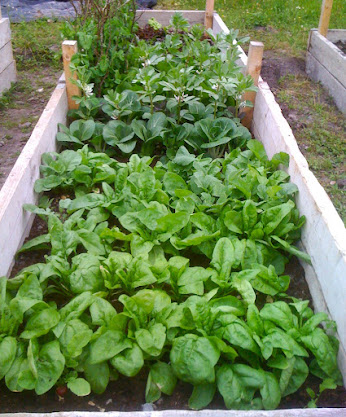Similarly, In Great Britain, 60 percent of food was imported when World War II
began, and most of that food now had to be grown locally – and everyone pitched
in. Radio programmes, magazines and movie newsreels showed families how to save
grease for machinery and bones for fertiliser, how to turn their yards and neighbourhood
vacant lots into gardens into an allotment garden. They explained how to clamp
potatoes under mounds of hay to keep them for the winter, and how to save
energy when cooking food by setting stews in hay-stuffed boxes to slow-cook.
On both sides of the Atlantic, the victory gardens worked. They allowed most
people to grow their own food, and spend less money. They put to work the
precious space that is now being used simply as lawns or landscaping features.
In a time when energy was scarce, they allowed more trucking and food to be
used for the war effort. They ensured that millions of people became
self-sufficient, and were insulated from the chaos of energy shortages and
supply chain disorder. In the event of a crisis, every gardener makes your
neighbourhood more secure. The gardens meant that people spent less money – the
less money you need to spend on food, the more you can put away for paying the
mortgage or eliminating the credit card debt. They created more beautiful
neighbourhoods, gave people exercise, and brought communities together.
Victory gardens meant that citizens ate better food as well – fresher than can be bought at any
store, with the maximum nutrition and no chemicals. A now-forgotten 1977
Congressional panel observed that heart attacks and strokes went down in the
war years, even with the stresses of war and a demographic shift toward the
elderly, because of more fresh vegetables in their diet.
Such gardens also reduce our dependence on fossil fuels, which are currently
used to plough fields, make fertilizers, create pesticides, harvest, process
crops and transport them to market. Gardens eliminate all those steps at once,
reducing a 10,000-kilometre diet to a 10-metre one. While Ireland never entered
into World War II, the same thing was done here – council estates gave families
as much land as a cow needed, and it was once common, I’m told, to see cows,
pigs and chickens in many yards in Dublin. Even schools and hospitals had their
own gardens to feed those inside.
Writer and former Soviet citizen Dmitri
Orlov wrote that most Russians had kitchen gardens, and that 90 percent of the
country’s food was grown in such plots. Even though they were formed from
necessity, because of the poverty of the nation and the incompetence of
centralized agriculture, they ended up being a blessing – as the nation
collapsed, the people could still eat. He warns that many nations in the West
are now heading for a crisis, but are not as well prepared.
Could we feed ourselves again? We have in the past, and with less knowledge and
technology than we have now. Australian ecologist David Holmgren has estimated
that his country’s cities could not only feed their own population, but become
net food exporters, if the yards and golf courses were replaced by everything
from leeks to cardoons to turnips. Presumably the same could be done in similar
cities in Europe and America.
Some people are doing this now – still a small group, but in an emergency they
could be the ones who teach others, as a similarly small fraction of the
population could teach others when World War II began. Within only two years,
though, Americans were growing almost half their own food. It could happen
again, and if the next few years were to bring another fuel crisis, or a civil
war, or an economic crash, or any number of other possibilities, every backyard
could be an ark that could carry people through the storm.


No comments:
Post a Comment